Discover how the serene elegance of Japandi design can transform your living room into a stylish, calming retreat you’ll never want to leave.
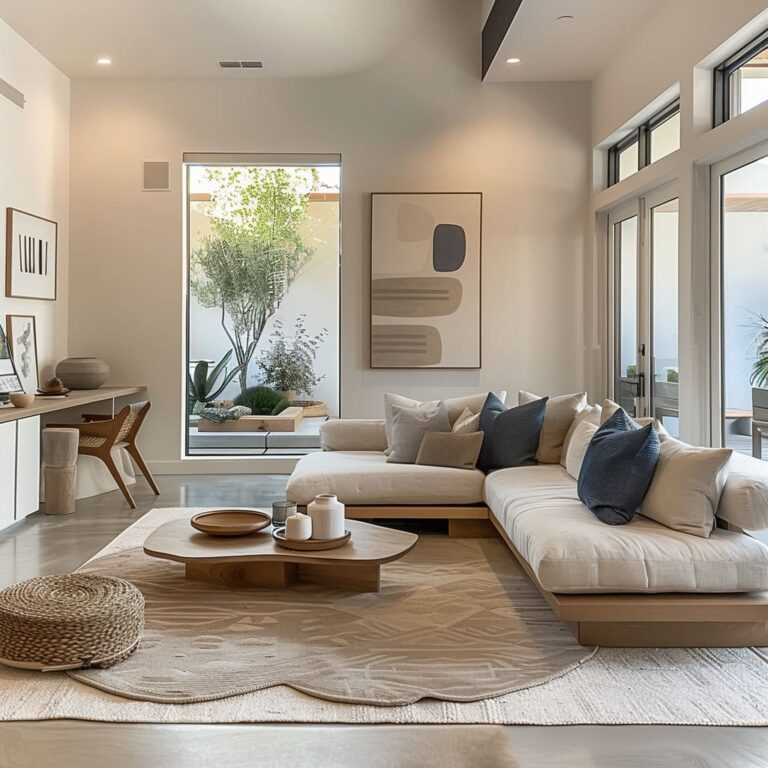
Are you craving a living room that balances minimalist elegance with warm, organic charm? Look no further than Japandi design—the perfect fusion of Japanese minimalism and Scandinavian hygge. This trend has taken the interior world by storm, offering serene, clutter-free spaces that still feel cozy and inviting.
In this guide, we’ll explore 15 stunning Japandi living room ideas to inspire your next home makeover. Whether you’re a fan of clean lines, natural textures, or muted color palettes, these ideas will help you create a space that’s both stylish and soul-soothing.
What is Japandi Style?
Before diving into the design ideas, let’s break down what makes Japandi so special.
- Minimalism Meets Warmth: Japanese design focuses on simplicity and Zen principles, while Scandinavian style brings in soft textures and functionality. Together, they create a harmonious, clutter-free yet cozy aesthetic.
- Neutral & Earthy Tones: Think soft beiges, warm woods, muted greens, and creamy whites.
- Natural Materials: Wood, linen, rattan, and stone dominate Japandi interiors.
- Functional Beauty: Every piece has a purpose—no unnecessary decor.
Now, let’s explore 15 Japandi living room ideas to transform your space!
1. Warm Wood & Neutral Tones
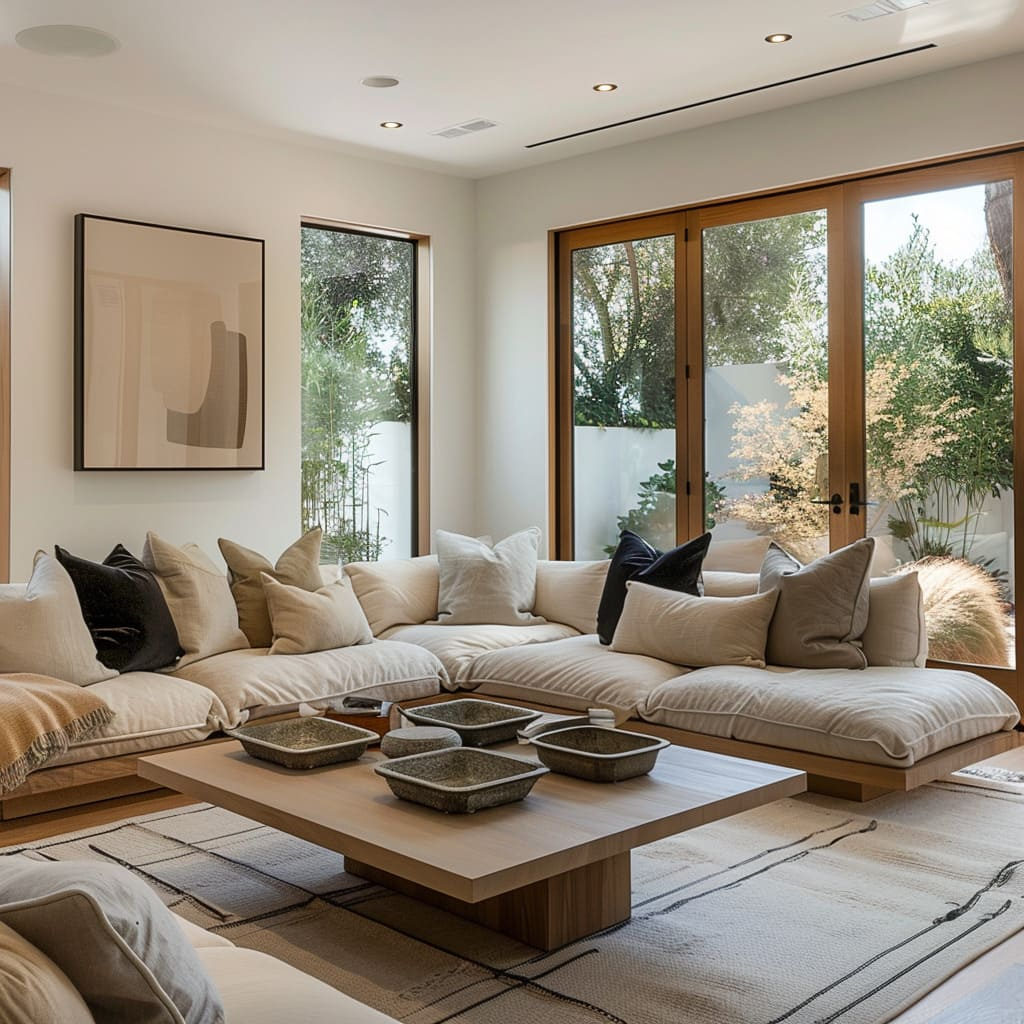
A foundation of light oak or ash wood paired with soft beige or white walls creates an airy yet grounded feel. Add a low-profile sofa in linen or wool for a cozy touch.
Pro Tip: Mix different wood tones (lighter floors, darker furniture) for depth.
2. Low-Sitting Furniture
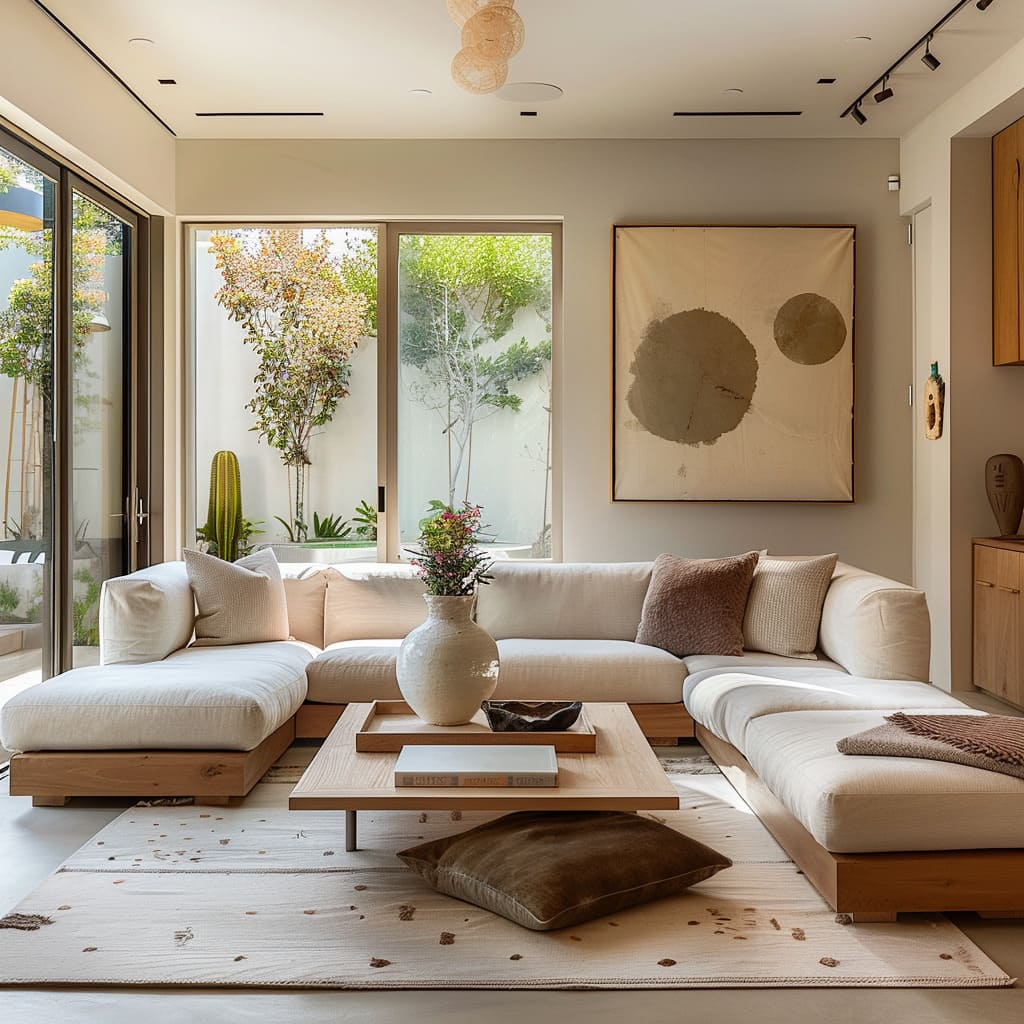
Embrace the Japanese tradition of low furniture—think floor sofas, chabudai (low tables), and zabuton (floor cushions). This creates an intimate, relaxed vibe.
3. Organic Textures

Layer woven rattan baskets, jute rugs, and linen curtains to add warmth without clutter. These textures bring tactile comfort while keeping things minimal.
4. Shoji-Inspired Room Dividers
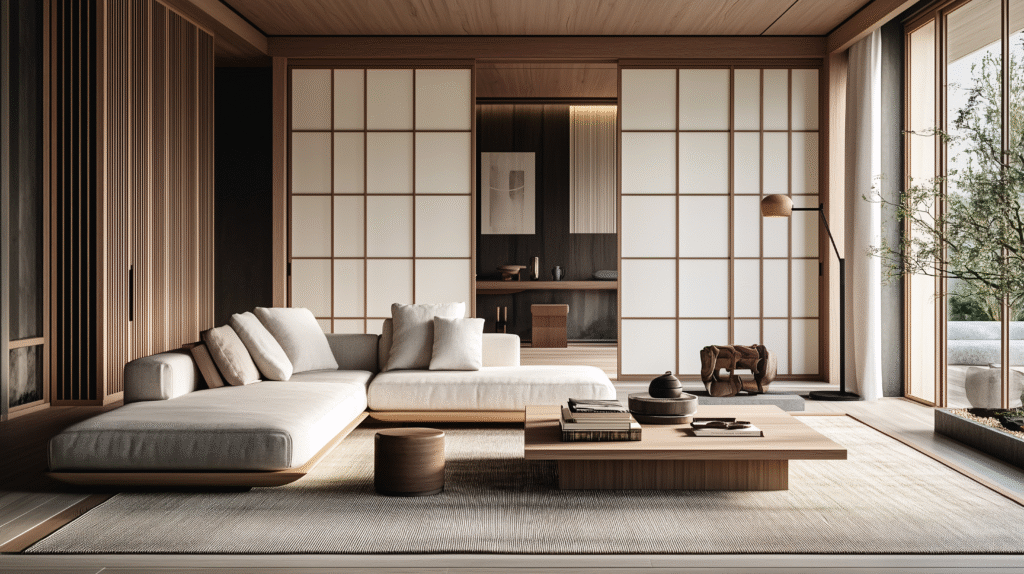
Instead of bulky walls, use sliding Shoji screens or open shelving to define spaces. These maintain an airy, open feel while adding visual interest.
5. Muted Green Accents

Soft sage or olive green in throw pillows, plants, or artwork introduces a calming, nature-inspired touch—key to both Japanese and Scandinavian aesthetics.
6. Black Accents for Contrast

A sleek black coffee table, picture frames, or lighting fixtures add striking contrast against light woods and neutrals.
7. Tatami-Inspired Flooring
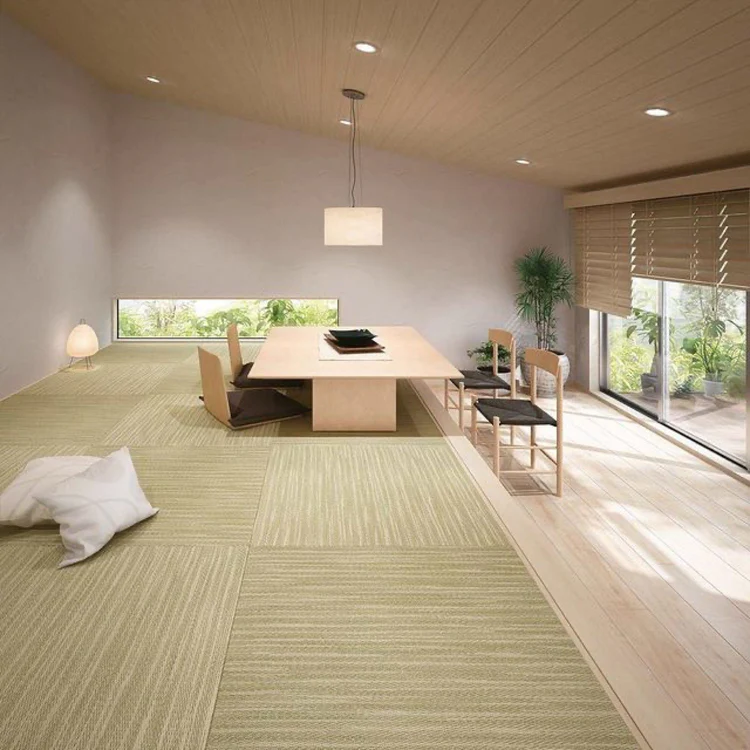
If possible, opt for light wooden floors with a matte finish or even tatami mats in a designated seating area for an authentic Zen feel.
8. Wabi-Sabi Imperfections

Incorporate handmade ceramics, slightly uneven textures, or weathered wood to embrace the beauty of imperfection—a core Wabi-Sabi principle.
9. Soft, Diffused Lighting
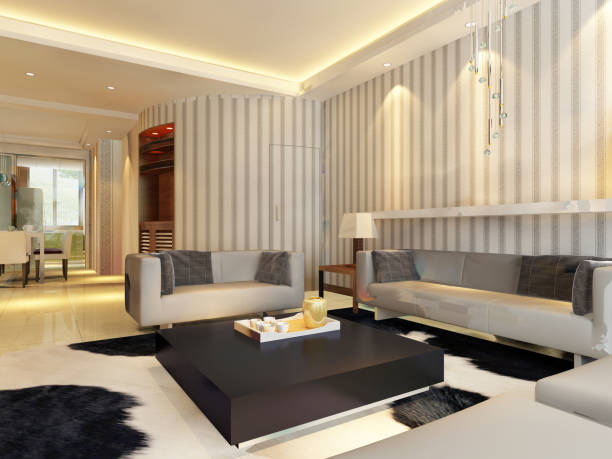
Avoid harsh overhead lights. Instead, use paper lanterns, woven pendant lights, and floor lamps to create a soft, inviting glow.
10. Built-In Storage for Clutter-Free Living
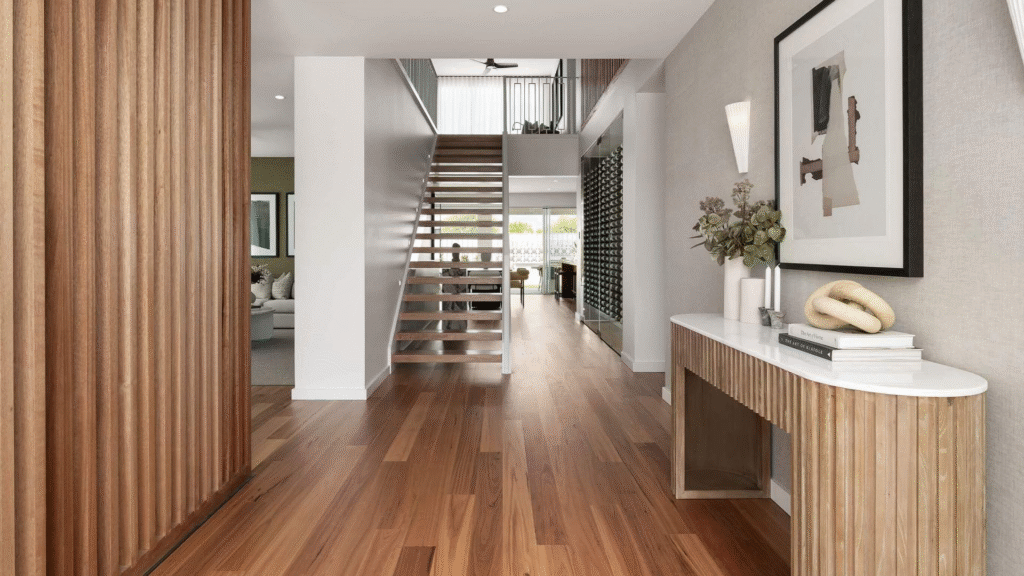
Japandi thrives on minimalism, so opt for hidden storage like under-sofa drawers or wall-mounted shelves.
11. Monochrome Artwork
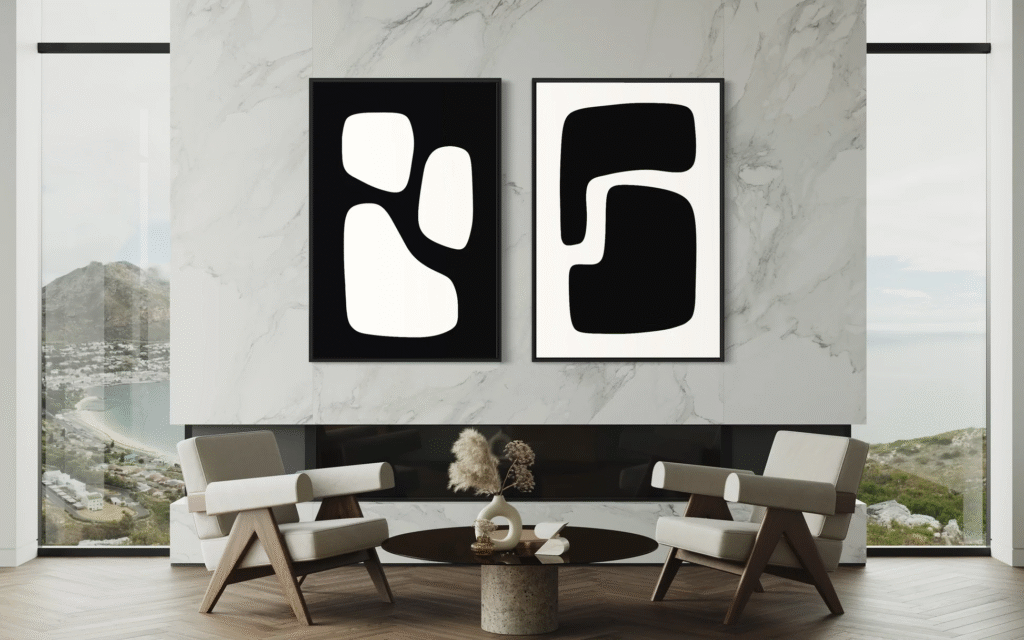
Black-and-white ink paintings, calligraphy, or abstract prints add sophistication without overwhelming the space.
12. Indoor Plants for Life & Freshness
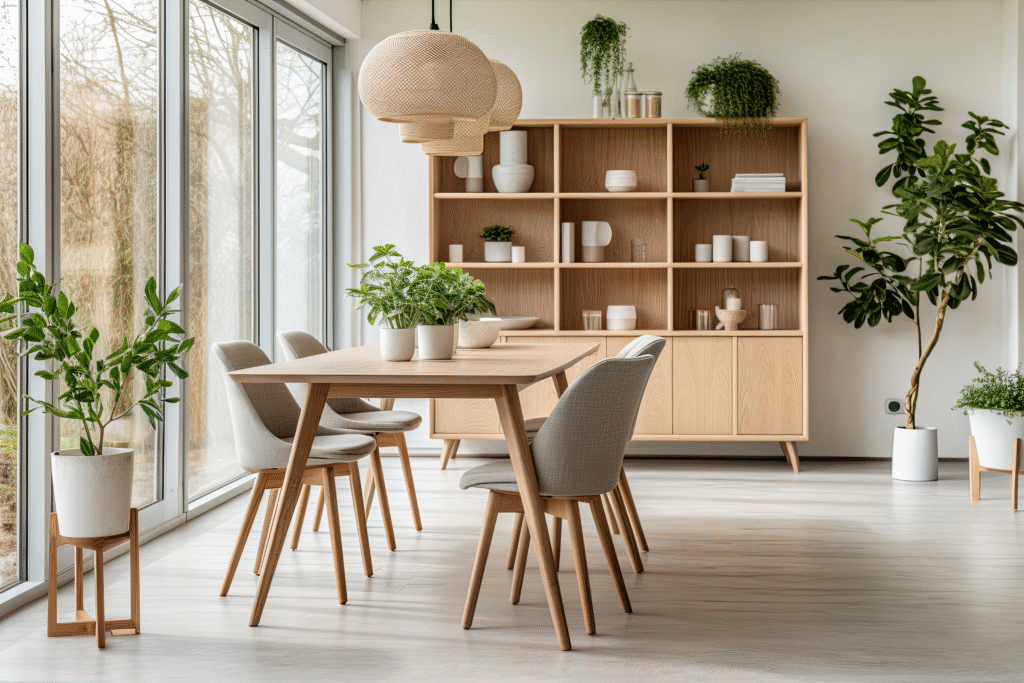
A bonsai tree, bamboo stalks, or a single large fiddle leaf fig bring nature indoors—essential for a tranquil Japandi space.
13. Sliding Doors for Space Efficiency

If renovating, consider Japanese-style sliding doors instead of traditional ones to save space and enhance flow.
14. A Cozy Reading Nook

Create a small hygge corner with a floor chair, soft blanket, and a stack of books—perfect for unwinding.
15. Less is More: Thoughtful Decor

Instead of filling shelves, curate a few meaningful items—a handcrafted vase, a single sculpture, or a vintage clock.
How to Start Your Japandi Living Room Makeover
- Declutter – Remove anything unnecessary.
- Choose a Neutral Base – Soft whites, beiges, and light woods.
- Add Warm Textures – Linen, rattan, and wool.
- Incorporate Subtle Contrast – Black accents or muted greens.
- Focus on Lighting – Soft, layered illumination.
FAQs About Japandi Living Rooms
1. Can Japandi work in small spaces?
Absolutely! Japandi’s minimalist approach makes it ideal for small rooms. Use multi-functional furniture and light colors to maximize space.
2. What colors are used in Japandi design?
Neutrals (beige, white, cream) with earthy tones (soft greens, warm woods) and black accents for contrast.
3. How do I keep my Japandi living room from feeling cold?
Layer textures (wool throws, rattan baskets) and add warm lighting (paper lamps, candles).
4. Can I mix Japandi with other styles?
Yes! Japandi blends well with modern, mid-century, or even bohemian elements—just keep the overall look clean and balanced.
Final Thoughts: Ready to Embrace Japandi?
A Japandi living room is more than just a trend—it’s a lifestyle that promotes calm, balance, and beauty. By blending Scandinavian coziness with Japanese simplicity, you can create a space that’s both stylish and soul-nourishing.
Which Japandi idea will you try first? Let us know in the comments—or tag us in your Japandi-inspired makeover!
Want more design inspiration? Subscribe for weekly decor tips!
